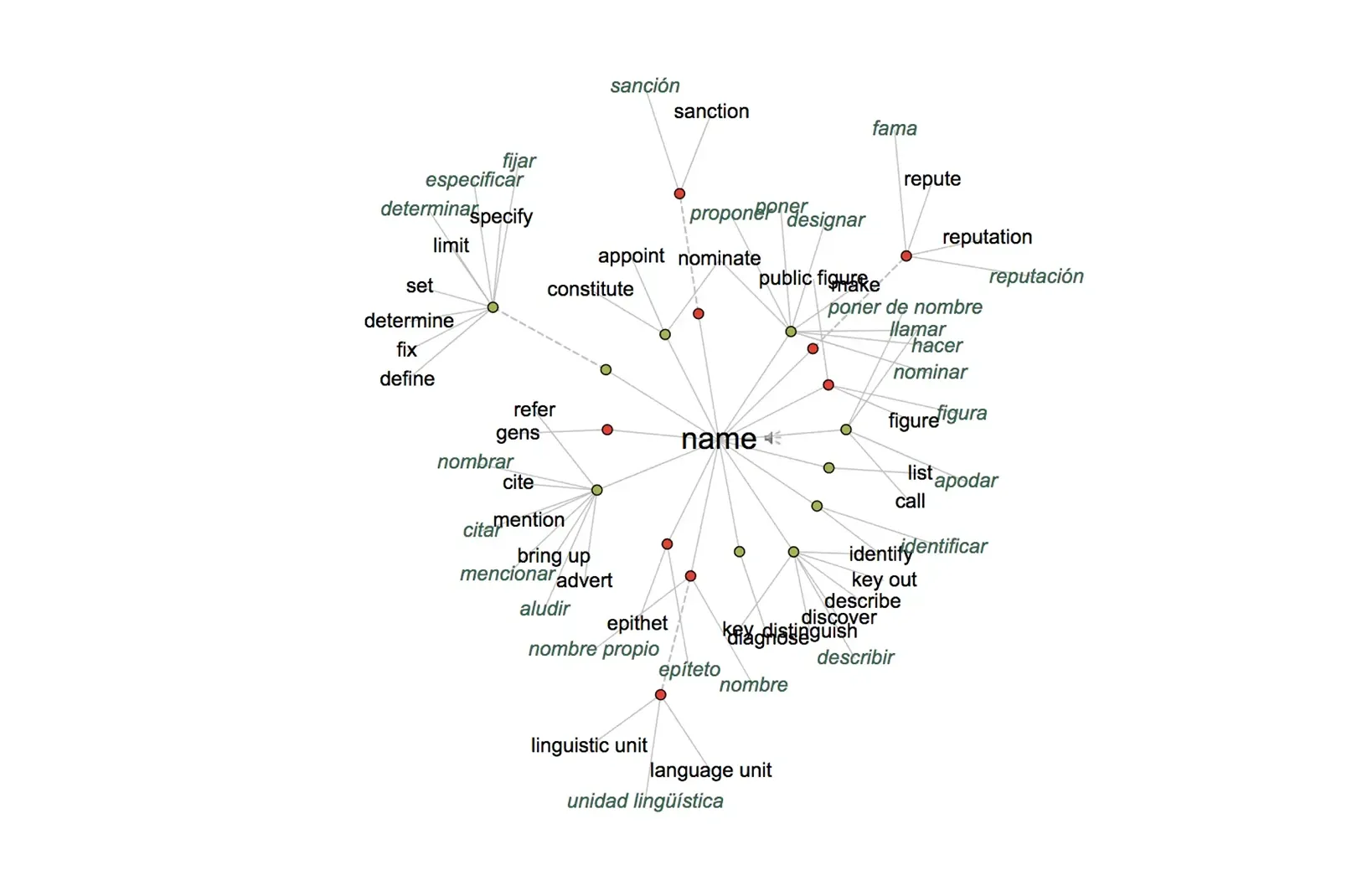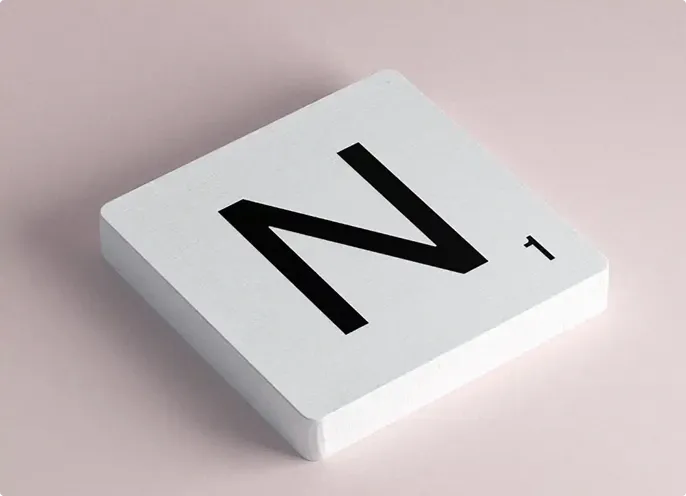With these words spoken by Juliet in Shakespeare's universal work, we can gain an idea of what, in essence, a name means. But what is the definition of the word? According to Wikipedia, a name as the verbal designation or denomination given to a person, animal, thing or concept, tangible or intangible, concrete or abstract, to distinguish it from others.
We are bombarded every day by dozens of names or namings through advertising. Many of them sounded strange or even unpronounceable at first. LinkedIn, Tumblr, Yoigo or Google are examples of names that, despite their apparent complexity, have become consolidated in our lives, conditioning our consumption habits and our way of understanding brands.
Within branding, naming is one of a brand’s key elements, alongside its logo, corporate symbol, and use of color. It is therefore a vitally important element, as such signs (among many other tangible and intangible factors) are used to identify and differentiate social entities from their competition, thereby generating amongst audiences what the image theorist Joan Costa calls the corporate image.
Naming is therefore a brand ambassador; it is the first thing an audience remembers. The values and attributes associated with this name come later and help to reinforce its recollection and attachment. To this end, naming must be a vehicle for stories, and seek to be attractive morphologically, visually and aurally, and generate memorability and relevance for the audience. The ultimate goal is for the name to provide value and make an impact, either by its originality and uniqueness or by its pronunciation and persistence through time. As stated by Naseem Javed, president of ABC Namebank: “A bad name is the best gift for the competition”.
Naseem Javed, President of ABC NamebankA bad name is the best gift for the competition.
THE INTERNET IS ALL OF US
How to differentiate yourself in a deeply globalised and digital market? A brand’s potential projection is now universal thanks to the internet. Despite this, because we are surrounded by both auditory and visual stimuli, it is becoming increasingly difficult to position ourselves and be seen. All aspects must be taken care of, a good name and correct SEO are not sufficient. It all adds up and can help. That is why you should not only think of a name that identifies the brand, but also consider all the words that customers or future customers may look for to reach it. Nowadays, most people seek solutions to their problems on the Internet, and this is where naming becomes important. After all, the more a name is related to a brand, the closer we will be to its potential audience. Although obviously, a name can’t always have a direct relationship with a brand. Therefore, a good SEO strategy is essential for proper brand positioning in search engines.
IS IT ALL MADE UP?
The eternal question, especially when it comes to naming. A trade name can be descriptive, patronymic, toponymic, a construction of two or more words, a contraction, an acronym, etc. There are currently more than 14 million names registered worldwide, so even if you have found the right name, it is unlikely not to already have been taken. Thorough documentation and an exhaustive search process will help to ensure that the chosen name is available.
However, it is always advisable to register it. Should another entity decide to use and register the same name as you have chosen, you may be forced to change your name.
THE METHOD
Building a brand name is always a complex task that requires a capacity for abstraction and synthesis like few other branding activities. However, as with almost everything, certain methodologies can help us find the perfect name.
In the words of poet and namer Fernando Beltrán, to generate a name, "you must get your fingers dirty in the soil of the vineyards for the wine you are going to name, or sleep in the open air at the seaside building site of that new island museum you are going to name, or read Homer again to remember the first travellers before you even start to create the name of that new hotel chain". In short, it is extremely important to explore the symbolic, conceptual and primitive essence of the brand to be named. But this is just the beginning. Over time, naming has become more professional and based on a purely scientific method in which, through a series of phases and processes, we obtain a shortlist of options that fit the brief perfectly, and whose final decision will depend on our client. Sometimes these shortlists, as they are called in the process, are subjected to testing among the potential audience to choose a final name.

HOW TO ACHIEVE A PERFECT BRAND NAME
The following is a description of the different steps to be followed when generating a name for your brand:
1. Know the brand:
As Beltran says, it all starts with "getting your fingers dirty", i.e. we need to be familiar with the brand, its values, products, personality and positioning. To do so it is essential to draw up a brief in collaboration with the client to describe in detail all the conditions and characteristics of the issuer.
2. Analyse the competition:
As in any creative process, it is very important to rigorously document the competition and how it constructs its names, and the semantic and conceptual territories it operates in.
3. Analyse parallel categories:
For example, if you are developing a name for a company that sells wine online, it is important to also be interested in companies that sell honey, cheese, energy smoothies or fortune cookies. That is, investigate brands that conduct a similar activity to the company in question, even if it is not exactly the same.
4. Construction models:
Here we can choose how we work. As mentioned above, several models of syntactic name construction exist and, depending on points 1, 2 and 3, we will discard those that do not fit with what we are looking for:
- Descriptive construction: Literally describe the product or service. For example, American Airlines.
- Neologisms: When a new name is constructed, it is usually based on several existing names, such as Pinterest (pinboard + interest).
- Abstract: Create a non-existent word. There are thousands of them: Yoigo, Tumblr, Wallapop, etc.
- Suggestive: When the name speaks of the brand’s direct benefit, as in the case of Carrefour Express.
- Evocative: When a new word is created from a known root (Destinia or Bankia).
- Associative: Names that describe something conceptually: Champion.
5. Creative Territories:
Once we are clear about the types of names we do NOT want to build, it is time to define the conceptual territories we are going to operate in and extract their associated words or terms. A good technique for dealing with this step is concept mapping. The aim is to extract from the key concept the words associated with it. There is a tool on the internet that can help us with this process called Visual Thesaurus and it is a very efficient automatic mind map generator.
6. No filters:
Time to unleash our creativity. Based on the chosen construction model or models, and the creative Territories we have selected, we will start to construct words. At this stage, EVERYTHING GOES, and this is important: too much is better than too little. All those words, word combinations, synonyms, meanings, etc. that come to mind, we will write them down until we have a comprehensive list. This is a quantity exercise. To do this, it is important to have a pencil in one hand and a dictionary in the other (or on-screen, of course). A sometimes practical exercise is to check how to say certain Latin words to obtain roots and suffixes.
7. Mix and match:
Once we have a large list of words, we will proceed to mix and match words, suffixes, prefixes, endings, roots, etc. We should be able to come up with between 150 and 200 constructions.
8. Sleep on it:
Obviously, you also need to relax, put it to the back of your mind and resume the process the next day. With a fresh head, you're likely to come up with new words, and you're sure to discard and change some as well. This process is healthy and necessary.
9. The filter:
From the final list of possible names, we should select only those that have some of these qualities:
- That sound better.
- That are most memorable.
- That help differentiate the most.
- That are morphologically pleasing to the eye and ear.
- That fit better with our value proposition.
You should then have narrowed down the list to about 15-20 names.
10. Shortlist:
Now comes the frustrating part of the process. The aim is to find out whether these 15 or 20 names have been previously registered by other brands. Some of the most liked ones will probably disappear from the list. To conduct this review or pre-screening, the OEPM website and the OMPI website are very useful. Both websites have a search engine where you can enter one by one the different names you have obtained and check if they exist. In addition, it is very important to check the internet to see if there is a domain with the same name. Some websites offer the option to search by entering the domain name and indicate its availability status, considering the different domain endings that exist (.es, .com, .net, .org, etc.).
11. The survivors:
Once the tedious and frustrating pre-screening step is over, it is time to select the names that have survived and pit them against each other. In this way, we will qualitatively select those that best meet the objectives of the brief. To do so, we can use a rating panel based on strategic, creative and formal suitability, scoring each proposal from 1 to 5 to obtain a ranking. Some of the questions we can ask ourselves to score them are: does it have a sonority, is it creative, does it enhance the territory and meaning of the brand, is it easy to remember, can it be registered unchanged, etc.?
12. The finalists:
The time has come to present the name. Ideally, a couple of proposals should be presented to the client so that they have a say in the process, but the decision must be justified. Remember the importance of choosing the ones that work best, bearing in mind that they do not always have to be the ones we like the most. Like the logo, naming is not an invention. It has semantic, syntactic and brand-value content that needs to be evidenced. To select the names to put forward, we will choose from the above list the two with the highest scores.
13. Registration:
This brings us to the end of the naming process. Once the final name has been obtained, it should be submitted for registration via a professional service that will indicate its availability in the different classes, markets and any potential obstacles and risks.
As we have seen, creating a name is by no means subjective or easy. It is a complex process subject to a large number of conditioning factors and based on an extensive synthesis and conceptual specification. In short, it is about trying to say more with the greatest possible economy. Naming is a true art that has been enhanced in recent decades, becoming more professional to make brands more competitive and more identifiable. It is an art because it draws on poetry and the subtleties of language whilst responding to commercial and advertising interests.
PlatoEvery object has a natural name, you just have to discover it.
